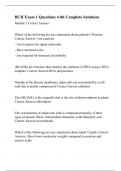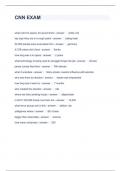Exam (elaborations)
PPCT Use of Force Questions + Answers Graded A+
- Course
- Institution
PPCT Use of Force Tactically - From a Tactical Standpoint - ️️All of the techniques within the PPCT System are designed around the "Three Minute Rule," which means if an officer cannot learn the basic mechanics of a technique in three minutes or less, in all probability, the officer will no...
[Show more]












